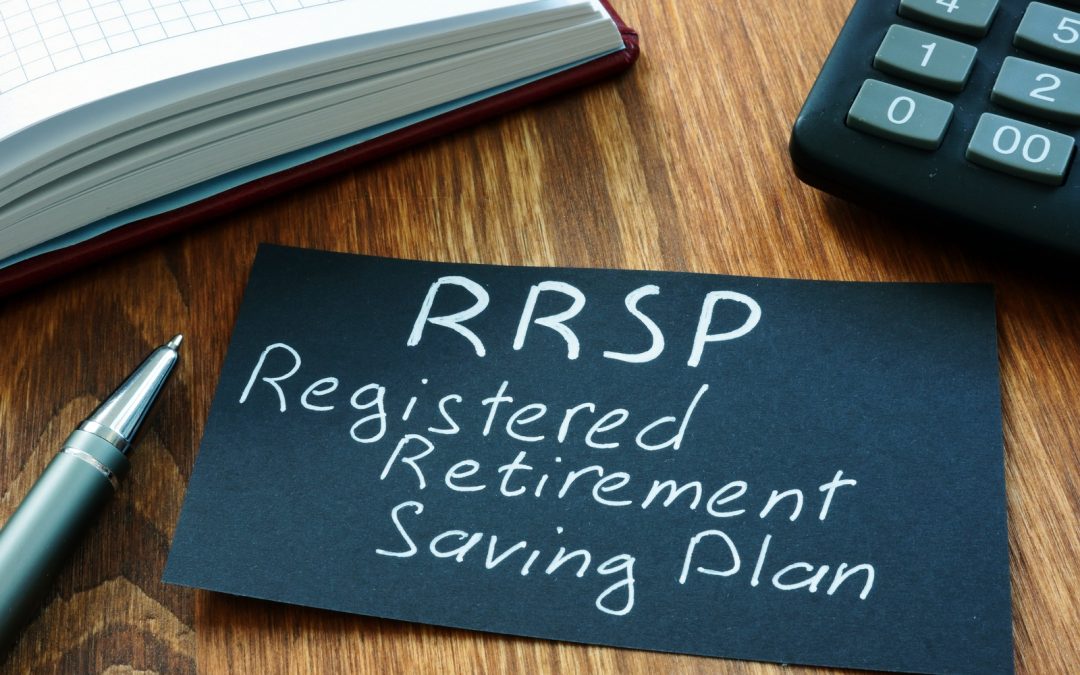You can avoid paying higher taxes and invest in your future with a registered retirement savings plan (RRSP). While both an RRSP and TFSA offer tax incentives, an RRSP can provide better financial planning opportunities for high-income contributors.
How an RRSP Works
A registered retirement savings plan (RRSP) is a financial savings account registered with the Canadian federal government. The tax-exempt account helps Canadians prepare for retirement. RRSP account-holders can be individuals, or the plan can be shared with a spouse or common-law partner.
The maximum amount you can contribute depends on your income, as listed on your Notice of Assessment when filing an annual tax return. However, the contribution cannot exceed 18% of your salary for the previous year.
There is also an additional maximum limit for the year, regardless of income level. Here are the RRSP contributions limits listed by year:
- 2020: $27,230
- 2021: $27,830
- 2022: $29,210
- 2023: $30,780
However, if you did not contribute the maximum, it can roll over to the following year. If you are in a lower tax bracket and expect an income increase, you can defer RRSP deductions. Then, when your income increases, you can contribute more than the maximum for your income bracket and maximize your tax savings.
The CRA (Canada Revenue Agency) allows up to $2,000 above your deduction limit before applying a penalty. For contributions exceeding $2,000 above the limit, the CRA applies a 1% tax per month.
Account-holders can add funds monthly or yearly up to age 71. For tax purposes, the annual deadline to contribute to your RRSP is March 1.
RRSP Tax Refund
The amount you contribute to your RRSP is deductible from your net income, which reduces your taxable income. As a result, investing in an RRSP can produce a tax refund.
Your tax refund can offer between 20-50% of your RRSP contribution. When you contribute more to your RRSP, you can expect a higher amount reflected in your tax refund.
RRSP Withdrawals
Most RRSPs are not locked in, which allows account holders to withdraw at any time. However, withdrawals are taxable. The CRA determines the rates based on the amount you withdraw. Consider the following withdrawal amounts and tax rates:
- Up to $5,000 — 10% (5% in Quebec)
- Over $5,000 to $15,000 — 20% (10% in Quebec)
- Over $15,000 — 30% (15% in Quebec)
The most significant benefit occurs when you transfer your RRSP into an RRIF (registered retirement income fund). Most retirement plans include a reduced income and a lower tax bracket. You can withdraw your years of contributions without experiencing high tax penalties.

RRSP for Higher Incomes
Federal Income Tax Brackets
Federal income tax rates are divided into brackets or segments. Your income determines your tax rate. Those with a higher income are placed in a higher tax bracket.
Federal income tax brackets are adjusted annually based on inflation and additional factors.
Consider the federal income tax brackets for 2021:
- $49,020 or less: 15%
- $49,020–$98,040: 20.5%
- $98,040–$151,978: 26%
- $151,978–$216,511: 29%
- More than $216,511: 33%
High-income earners can use RRSP contributions to lower their tax bracket.
We can demonstrate the effect using the tax bracket information for 2021. If an account holder chooses a maximum RRSP contribution, the reported income reduction will lower the taxable income segment.
For example, we’ll review an 18% salary contribution for an income of less than $151,000. The individual would move from the 26% tax segment to the 20.5% segment. In our example, we did not exceed the RRSP contribution limit.
Monthly vs. Annual Contributions
An RRSP account holder can contribute funds at any time. However, the most common repeated RRSP contributions are either monthly or annually. While your financial advisor can help you determine which best benefits you, monthly investments generally provide the most significant benefits.
Monthly contributions earn income sooner. As the funds have a more extended growth period in the tax-exempt account, your contributions can increase more over time. In addition, setting up a monthly deposit can be easier than a large-sum annual contribution.
Ask Your Financial Advisor
Discussing your RRSP contributions with your financial advisor can provide valuable insight, including opportunities for the best tax benefits. For more advice about getting the most out of your finances, Qopia Financial has the answers to your financial planning questions.
Aligned Capital Partners Inc. (“ACPI”) is a full-service investment dealer and a member of the Canadian Investor Protection Fund (“CIPF”) and Investment Industry Regulatory Organization of Canada (“IIROC”). Investment services are provided through Qopia Investments, an approved trade name of ACPI. Only investment-related products and services are offered through ACPI/Qopia Investments and covered by the CIPF. Financial planning and insurance services are provided through Qopia Investments. Qopia Financial is an independent company separate and distinct from ACPI/ Qopia Investments.
Financial Planner of Qopia Financial / Portfolio Manager of Aligned Capital Partners Inc.
I grew up in a small town south of Ottawa, called Metcalfe, ON and graduated from the University of Ottawa in 2012. My love for sports is a major reason why I place so much importance on performance and this includes performing for clients. Those closest to me would describe me as straightforward, but also generous, driven, and dynamic. As a coach, teammate, and partner of my clients, I want to see that everyone wins.
Since 2017, I have been working as a Financial Advisor and have always had a natural affinity for business and investments. In early 2021, I completed my Chartered Investment Management (CIM) ®designation, which has helped me select and recommend the highest quality investments for my clients. My goal is to provide the most competitive, transparent, and cost-effective Estate Planning and Investment Management service in Canada, which focuses on Tax minimization, Growth and Protection.
I don’t do it alone. At Qopia, I have a team of dedicated administrative staff, in-house analysts, insurance specialists, lawyers, accountants as well other Financial Advisors with whom I can consult. I pride myself on striving to deliver the industry’s top service for my clients.


Recent Comments